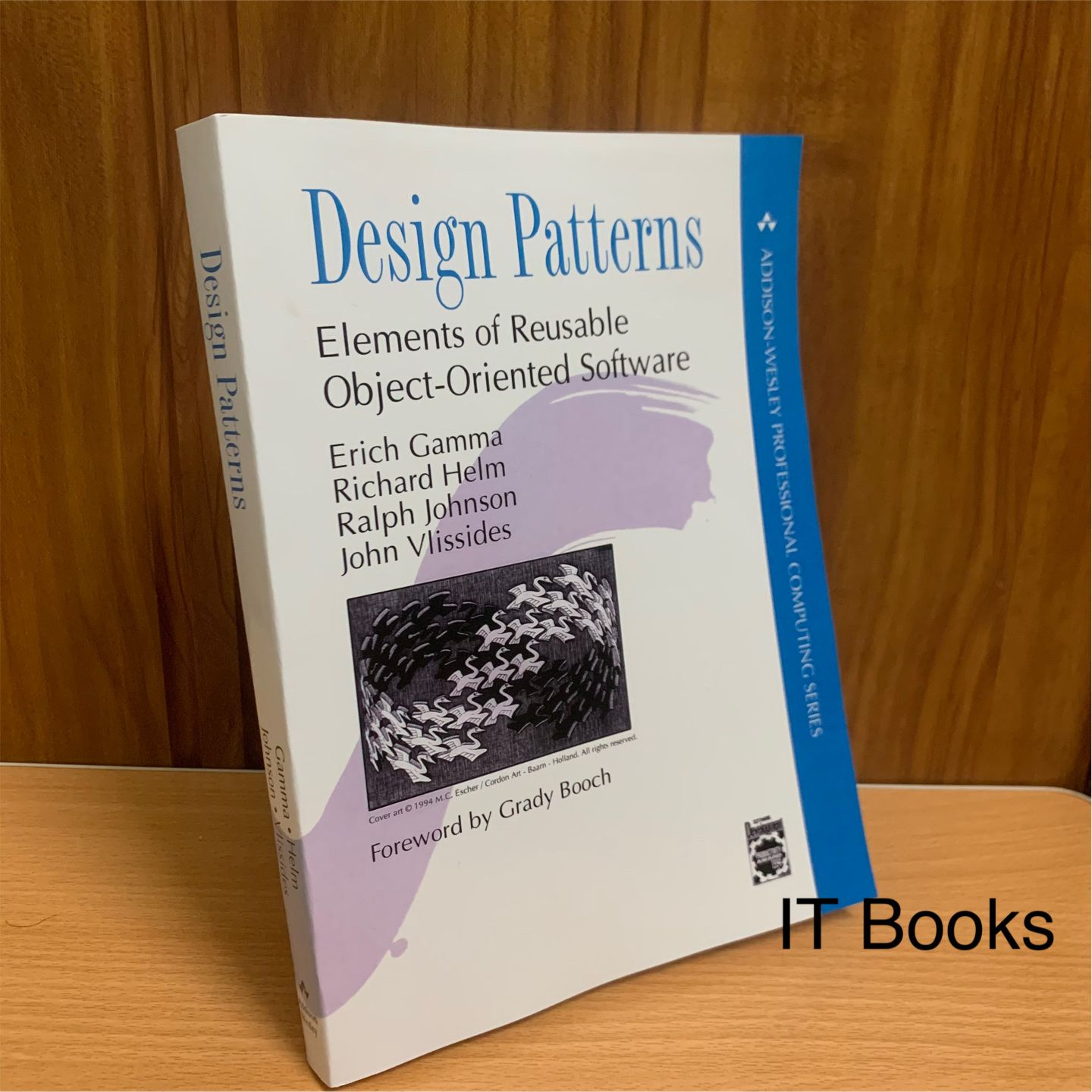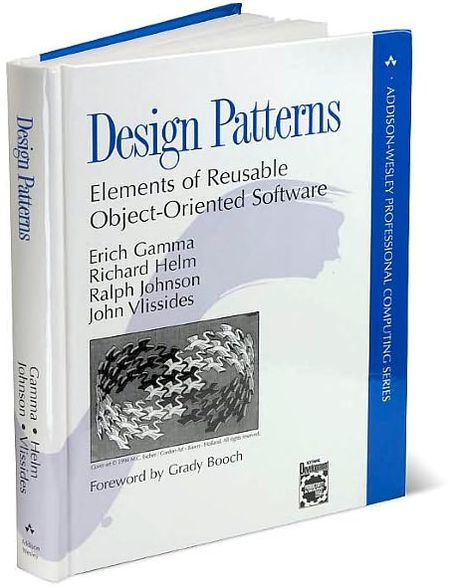Table Of Content
- Structural Design Patterns
- Impact of Object Oriented Design Patterns on Software Development
- Using Structuremap in legacy ASP.NET MVC applications
- Others also viewed
- GoF Design Pattern Types
- Design patterns: elements of reuseable object-oriented software
- Search code, repositories, users, issues, pull requests...

A decorator allows to add behavior to an individual object, either statically or dynamically, without affecting the behavior of other objects from the same class. This object is sent to a receiver which executes the command. The advantage of this technique is that the requests can be queued, logged or implemented to support undo/redo. The Interpreter Pattern represents a grammar as a class hierarchy and implements an interpreter as an operation on instances of classes. Use the Interpreter Pattern when there is a language to interpret and you can represent statements in the language as abstract syntax trees. Behavioral Patterns are concerned with algorithms and the assignment of responsibilities between objects.
Structural Design Patterns
Instead of classes communicating directly, and thus requiring knowledge of their implementation, the classes send messages via a mediator object. Structural Patterns are concerned with how classes and objects are composed to form larger structures. Prototype Patterns specify the kinds of objects to create using an instance, which then can create new objects by copying the prototype. Use the Prototype Pattern when a system should be independent of how its products are created, composed, and represented. They warn that the implementation of a subclass can become so bound up with the implementation of its parent class that any change in the parent's implementation will force the subclass to change.

Impact of Object Oriented Design Patterns on Software Development
How the Strategy Design Pattern Can Help You Quickly Evaluate Alternative Models by Blake VanBerlo - Towards Data Science
How the Strategy Design Pattern Can Help You Quickly Evaluate Alternative Models by Blake VanBerlo.
Posted: Mon, 25 Jan 2021 08:00:00 GMT [source]
Furthermore, they claim that a way to avoid this is to inherit only from abstract classes—but then, they point out that there is minimal code reuse. The Command pattern encapsulates a request as an object, allowing for parameterization, queuing, and logging of requests. Developers can learn how the Command pattern decouples sender and receiver logic. Behavioral Patterns describe patterns of objects/classes and the patterns communication between them. The Factory Method Pattern makes a design more customizable and only a little more complicated.
Using Structuremap in legacy ASP.NET MVC applications
Builder Patterns separate the construction of a complex object from its representation so that the same construction process can create different representations. The flyweight pattern is used to reduce the memory and resource usage for complex models containing many hundreds, thousands or hundreds of thousands of similar objects. The Facade pattern provides a simplified interface to a complex subsystem. The authors demonstrate how the Facade pattern promotes simplicity and reduces client complexity. The prototype pattern is used to instantiate a new object by copying all of the properties of an existing object, creating an independent clone.
This practise is particularly useful when the construction of a new object is inefficient. The memento pattern is used to capture the current state of an object and store it in such a manner that it can be restored at a later time without breaking the rules of encapsulation. The interpreter pattern is used to define the grammar for instructions that form part of a language or notation, whilst allowing the grammar to be easily extended. The facade pattern is used to define a simplified interface to a more complex subsystem.
Behavioral
Design patterns promote code reuse, reduce coupling, and enable software systems to evolve gracefully over time. This seminal book, revered by developers worldwide, presents a comprehensive collection of design patterns that form the building blocks of robust, object-oriented software systems. In this recommendation, we explore why "Design Patterns" is a must-read for software engineers and how it equips them with the tools needed to excel in writing clean, maintainable, and efficient code. Design Patterns is golden classics of software design books written by Erich Gamma, Richard Helm, Ralph Johnson and John Vlissides (aka Gang of Four – GoF). When this book was published first it was revolutionary because it contained still undocumented knowledge from software development field that needed some systematic work and organization on it.

GoF Design Pattern Types
The book outlines the benefits of the Prototype pattern in enhancing object creation flexibility and optimizing system performance. The Singleton pattern ensures that a class has only one instance and provides a global point of access to that instance. The book discusses the Singleton pattern's use cases and caveats, allowing software engineers to leverage it efficiently when needed.
Design patterns: elements of reuseable object-oriented software
Sometimes acquaintance is called 'association' or the 'using' relationship. Acquaintance objects may request operations of each other, but they are not responsible for each other. Acquaintance is a weaker relationship than aggregation and suggests much looser coupling between objects, which can often be desirable for maximum maintainability in designs.
The Flyweight Pattern defines a structure for sharing objects. However, applications that use lots of objects must pay careful attention to the cost of each object. Overall, the Flyweight pattern’s effectiveness depends heavily on how and where it’s used.
Same way you use receipts in cooking book – you know what you want, book gives just points you to right direction and it is up to you to get there. The state pattern is used to alter the behaviour of an object as its internal state changes. The pattern allows the class for an object to apparently change at run-time.
By adopting design patterns, software engineers can create systems that are adaptable to evolving needs, resulting in more resilient and maintainable codebases. Rather than composing interfaces or implementations, structural patterns describe ways to compose objects to realize new functionality. This added flexibility of object composition comes from the ability to change the composition at run-time, which is impossible with static class composition. Design Patterns was the first book that gathered together and defined solutions in the form of patterns to most common problems in technical design of software. Patterns in this book are used today in almost every program and API to keep code clean, testable and manageable.
The clients can access and use individual objects and compositions in the same manner. Delegation is a way of making composition as powerful for reuse as inheritance. Delegation is analogous to subclasses deferring requests to parent classes.
The Strategy pattern enables developers to encapsulate varying algorithms and behaviors behind a common interface. The book demonstrates how the Strategy pattern promotes flexibility in selecting algorithms at runtime. Gangs of Four design patterns lay the foundation of core design patterns in programming. There are many other design patterns built on top of these patterns for specific requirements. There are 11 behavioral design patterns defined in the GoF design patterns.
The authors employ the term 'toolkit' where others might today use 'class library', as in C# or Java. In their parlance, toolkits are the object-oriented equivalent of subroutine libraries, whereas a 'framework' is a set of cooperating classes that make up a reusable design for a specific class of software. They state that applications are hard to design, toolkits are harder, and frameworks are the hardest to design.
Instead of using numerous constructors, the builder pattern uses a builder object, that instantiates and initializes objects using a multiple of steps. The Facade Pattern shows how to make a single object represent an entire subsystem. The facade carries out its responsibilities by forwarding messages to the objects it represents. Designs that use the Abstract Factory, Prototype, or Builder Patterns are even more flexible, but they’re often more complex. Using inheritance is recommended mainly when adding to the functionality of existing components, reusing most of the old code and adding relatively small amounts of new code. If you’re building an application program (such as a document editor or spreadsheet), then internal reuse, maintainability, and extension are high priorities.
The book empowers software engineers with the knowledge needed to evaluate when and how to apply design patterns effectively. The Composite pattern treats individual objects and compositions of objects uniformly. The book showcases how the Composite pattern simplifies the representation of hierarchical structures. The bridge pattern is a design pattern that separates the abstract elements of a class from its technical implementation.

No comments:
Post a Comment